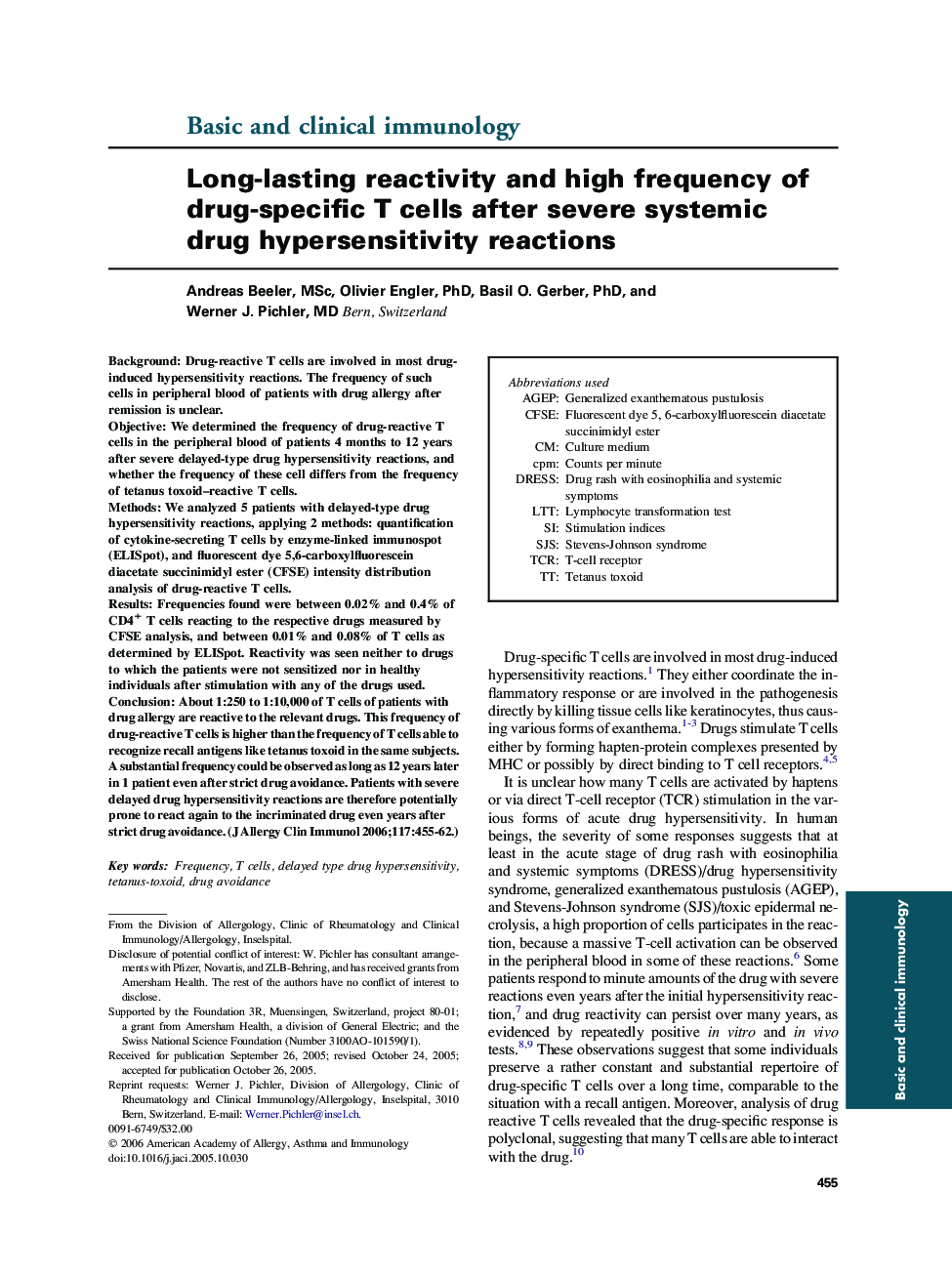| Article ID | Journal | Published Year | Pages | File Type |
|---|---|---|---|---|
| 3203277 | Journal of Allergy and Clinical Immunology | 2006 | 8 Pages |
BackgroundDrug-reactive T cells are involved in most drug-induced hypersensitivity reactions. The frequency of such cells in peripheral blood of patients with drug allergy after remission is unclear.ObjectiveWe determined the frequency of drug-reactive T cells in the peripheral blood of patients 4 months to 12 years after severe delayed-type drug hypersensitivity reactions, and whether the frequency of these cell differs from the frequency of tetanus toxoid–reactive T cells.MethodsWe analyzed 5 patients with delayed-type drug hypersensitivity reactions, applying 2 methods: quantification of cytokine-secreting T cells by enzyme-linked immunospot (ELISpot), and fluorescent dye 5,6-carboxylfluorescein diacetate succinimidyl ester (CFSE) intensity distribution analysis of drug-reactive T cells.ResultsFrequencies found were between 0.02% and 0.4% of CD4+ T cells reacting to the respective drugs measured by CFSE analysis, and between 0.01% and 0.08% of T cells as determined by ELISpot. Reactivity was seen neither to drugs to which the patients were not sensitized nor in healthy individuals after stimulation with any of the drugs used.ConclusionAbout 1:250 to 1:10,000 of T cells of patients with drug allergy are reactive to the relevant drugs. This frequency of drug-reactive T cells is higher than the frequency of T cells able to recognize recall antigens like tetanus toxoid in the same subjects. A substantial frequency could be observed as long as 12 years later in 1 patient even after strict drug avoidance. Patients with severe delayed drug hypersensitivity reactions are therefore potentially prone to react again to the incriminated drug even years after strict drug avoidance.
